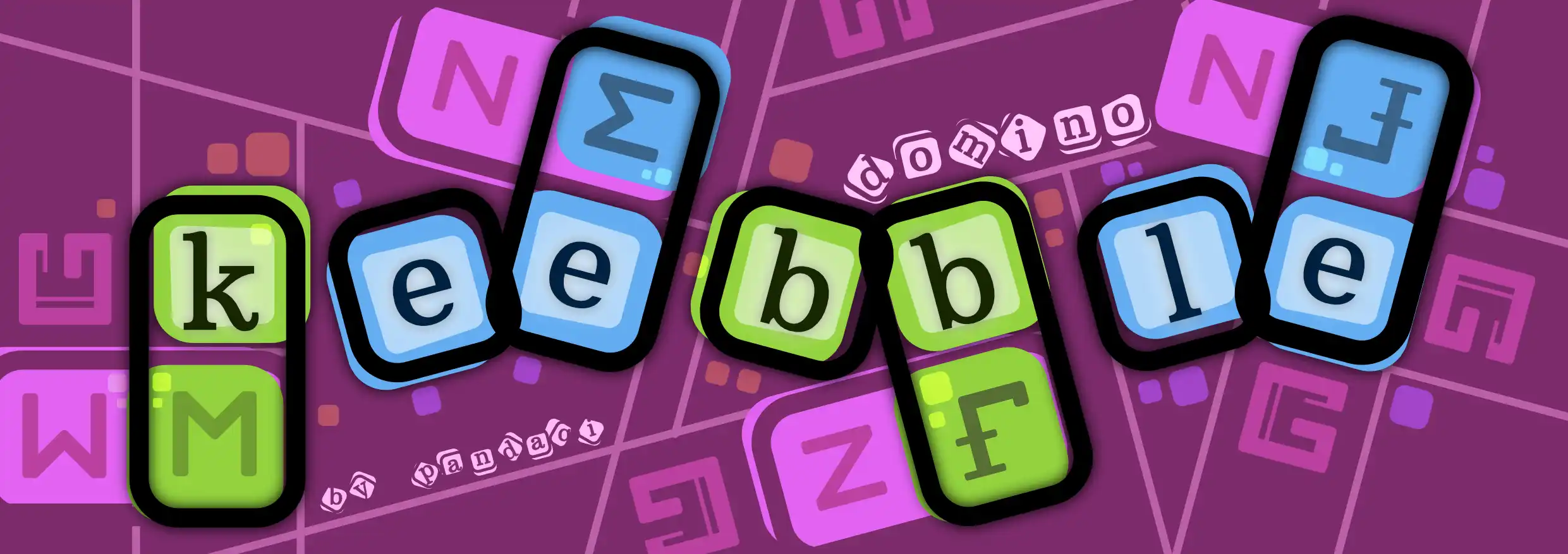All players pick a clear side at which they sit: left, right, top or bottom. This is important! It determines how you must read the letters on the board.
Shuffle all cards into a face-down deck. Deal all players 4 cards. Finally, draw another card and place it (face-up) in the center of the table.

The game ends when somebody runs out of cards and can’t draw (enough) new ones. The player with the most points wins.
As you see, these dominoes don’t have regular letters. They have special symbols that look like different letters when viewed from a different angle.
Therefore, letters mean whatever they look like from your perspective. If you sit on the left, and a letter is a “P” from that side—then it’s a “P” for you. It might be some other letter for someone else.
The “+” symbol is a wildcard. It can be any letter you want. Some symbols have sides that mean nothing: those also count as wildcards.

Press this button to get a random example turn, or read the rules below.
Play any number of dominoes from your hand. They must be in a straight line and connect to the existing dominoes. Otherwise, orient and place them as you wish.
You’re also allowed to overlap existing dominoes. However, you may not fully overlap one domino with a new one.


Every new valid word gives you points. However, every new invalid word means minus points.
Each symbol is simply worth 1 point. A word is at least 2 letters long. (So ignore any single, isolated letters.)
Score is tracked with a face-down pile in front of you. Grab as many cards from the deck as points you scored, and add them to your score pile.

Refill your hand back to 4. If you did not play a domino this turn, you must draw 1–4 cards from your own score pile.
Instead of a letter, a domino space can now contain a special action (or cell type). When reading words, they are an empty space and do nothing.
However, when you overlap this space with another domino, the action is triggered.

Below are all options.
Ah, our favorite Keebble element again! Walls can now be baked into dominoes, at any edge. A wall between two cells means they aren’t “adjacent” anymore.
It allows breaking up words or creating words where you otherwise couldn’t. But beware, because they also increase the likelihood of negative points for invalid words created!

